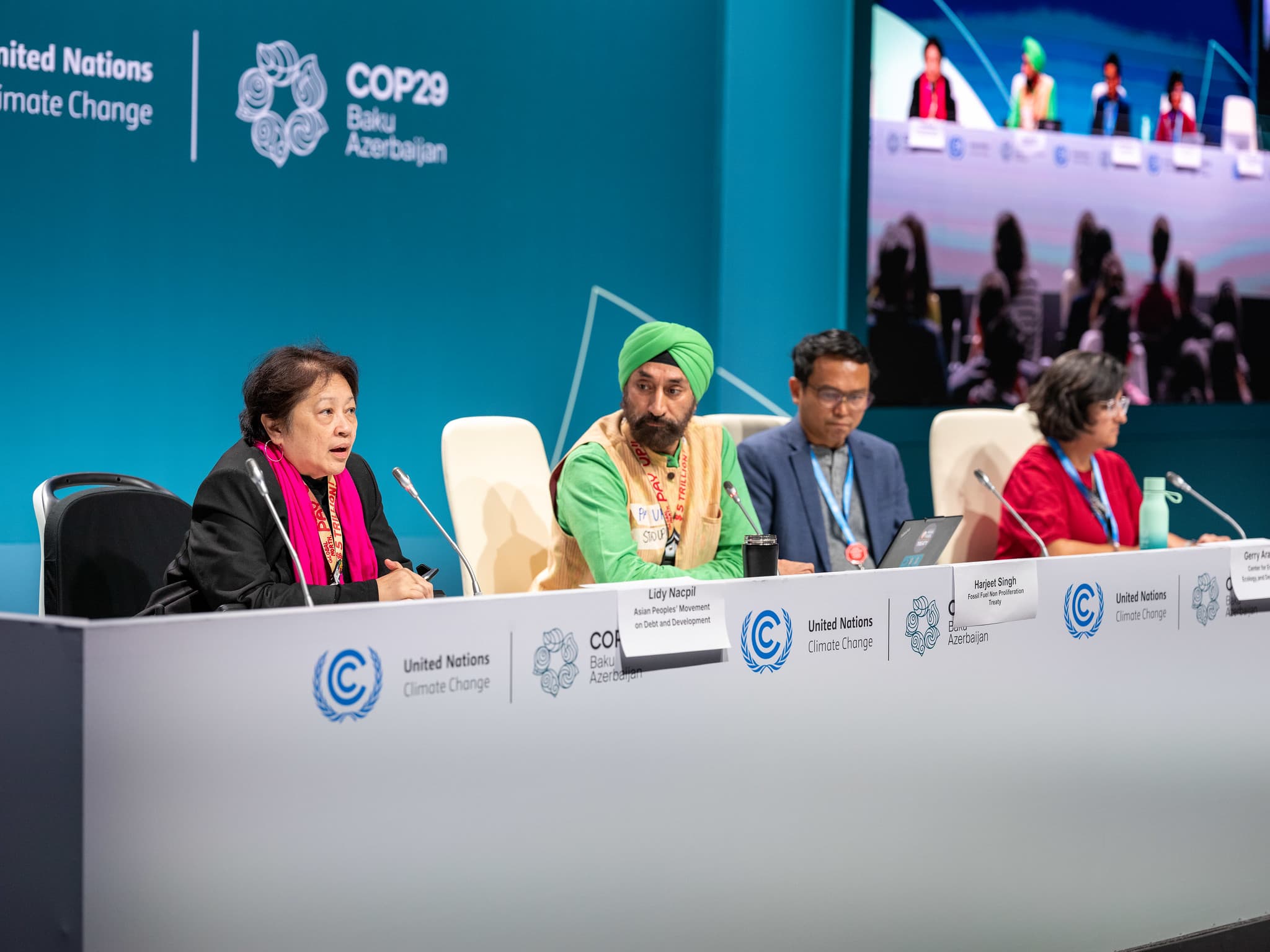COP29 ends with a deal, but not cheers
World negotiators eventually found an agreement on climate finance, yet leaving poorer countries dissatisfied.
Published on November 25, 2024

© United Nations
Mauro swapped Sardinia for Eindhoven and has been an IO+ editor for 3 years. As a GREEN+ expert, he covers the energy transition with data-driven stories.
As negotiations overran Friday—the official final day of COP29—an agreement was reached on Sunday, although not everyone left the meeting happy. Developed countries pledged to raise their contribution to helping developing countries fight climate change to $300 billion annually, but poorer countries were unsatisfied with this figure.
Negotiations at the 29th Conference of Parties (COP29) focused on money and, more precisely, the new collective quantified finance goal (NCQG). As part of the 2015 Paris Agreement, developed countries committed to curbing their greenhouse gas emissions and setting a cash target to help developing countries grow sustainably.
While economists suggested developing countries would need at least $1 trillion annually until the end of the decade to cope with global warming's impacts, developed countries resisted. As an agreement wasn’t found by Friday, talks went on the weekend and went on the brink of collapse.
“This document is a little more than an optical illusion. This, in our opinion, will not address the enormity of the challenge we face,” told other delegates, Chandi Raina, one of India’s representatives. “Our islands are sinking. How can you expect us to go back to the women, men, and children of our countries with a poor deal?” stated Cedric Schuster, chair of the Alliance of Small Island States.
Content presidency
On the other hand, the Azerbaijani presidency expressed its satisfaction with the agreement. COP29 President Mukhtar Babayev: “The Baku Finance Goal represents the best possible deal we could reach. In a year of geopolitical fragmentation, people doubted that Azerbaijan could deliver. They doubted that everyone could agree. They were wrong on both counts.”
A first draft of the deal was circulated on Friday. It proposed that developed countries contribute $250 billion annually by 2035. The draft also set a broader goal of raising $1.3 trillion by then, including contributions from all public and private sources– which remained untouched in the final version.
“The Baku Finance Goal represents the best possible deal we could reach, and we have pushed the donor countries as far as possible. We have forever changed the global financial architecture and taken a significant step towards delivering the means to deliver a pathway to 1.5C. The years ahead will not be easy. The science shows that the challenges will only grow,” added Babayev.
What is this money for?
These contributions are for three kinds of funds: loss and damage, mitigation, and adaptation. Loss and damage money helps countries recover from the effects of climate change they are already suffering. Mitigation assists developing countries in transitioning away from polluting activities. Adaptation money prepares developing countries for the impacts of climate change.
Before the start of COP29, countries pledged roughly $700 million. Analysts suggested that $580 billion would be needed by 2030 to compensate for the damages suffered by developing countries.
The role of China
Part of the talks’ tension was also about China, the now world’s largest carbon emitter. Despite being the second-largest economy in the world, China is, according to United Nations classifications, a developing country. Therefore, it has no formal obligation to cut its greenhouse gas outputs or provide financial help to poorer countries.
Developed countries—including most European nations, the United States, Canada, Japan, Australia, and New Zealand—demanded others pay, including China and Gulf states. The deal encourages developing countries to contribute but does not set any mandatory financing.
Within the finance deal, China agreed on a formula allowing its contributions to be voluntarily counted in the fund for climate-vulnerable states.
The role of the US
Following Donald Trump's return to the White House, the role of the United States in the negotiations—as the world’s top historic GHG emitter—was unclear. Much of the attention was on China, as, given the re-elected president’s stance on climate change, the US is expected to step down from climate mitigation action.
President Joe Biden congratulated COP29 participants for finding an agreement and suggested that more work was needed.
Opposition to fossil fuels phase-out
In addition to the climate financing discussion, there was debate about the phase-out of fossil fuels. During Dubai last year’s COP28, countries pledged to transition away from fossil fuels and triple renewable energy capacity.
Yet, the 22-nation Arab Group, led by Saudi Arabia, has been obstructing Baku talks, declaring its opposition to any climate agreement targeting fossil fuels. The same Azerbaijani presidency was criticized for its ties with the fossil fuel industry before and throughout the conference.
Negotiators failed to set a pathway for how countries will act on last year’s pledge to transition away from fossil fuels, which is missing in the final deal.
Eyes on COP30
Negotiators in Baku also found an agreement on rules for a global market to trade carbon credits. A carbon credit is a permit that allows a company or organization to emit a certain amount of carbon dioxide (or other greenhouse gases). Each credit typically represents one ton of CO₂. Companies can buy, sell, or trade these credits to offset emissions and comply with environmental regulations. Proponents say this market could mobilize billions of dollars for climate mitigation initiatives like reforestation and clean energy deployment projects.
The city of Belém, in Brazil, will host COP30. As COP29’s deal sinks in, discussions will resume next year, with negotiators having more work to do and possibly higher climate ambitions to be set.
